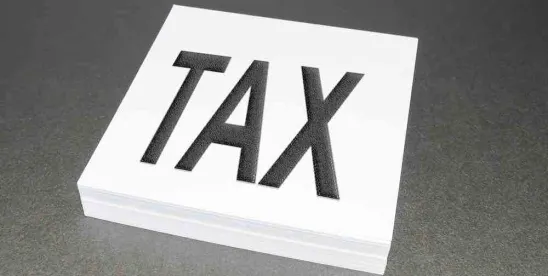A document leaked earlier this year and attributed to the House Ways and Means Committee included the repeal of tax-exempt bonds[1] as a source of revenue to help defray the cost of extending the provisions of the Tax Cuts and Jobs Act that otherwise will expire at the end of 2025. Apoplexy ensued.
This consternation is fueled by the notion that Congress has the untrammeled authority to prevent states, and the political subdivisions thereof, from issuing obligations the interest on which is excluded from gross income for federal income tax purposes. This notion appears to ignore a line of precedent that culminated in making Bet365, DraftKings, FanDuel, et al. indistinguishably omnipresent.
Curious? Read on after the break.
The concern that Congress has the unfettered right to proscribe the issuance of all tax-exempt bonds emanates from the U.S. Supreme Court’s (the “Court”) decision in South Carolina v. Baker.[2] The Court held in that case that Congress violated neither the principles of intergovernmental tax immunity[3] nor the Tenth Amendment to the U.S. Constitution by enacting a prohibition against the issuance of tax-exempt bearer bonds.
The portion of the Court’s opinion pertaining to the Tenth Amendment cited Garcia v. San Antonio Metropolitan Transit Authority, 469 U.S. 528 (1985), for the proposition that the political process establishes the limitations under the Tenth Amendment on Congressional authority to regulate the activities of the states and their political subdivisions. Under this formulation of Tenth Amendment jurisprudence, the courts do not define spheres of Congressional conduct that pass or fail constitutional muster. The Court concluded that the political process functioned properly in this instance and did not fail to afford adequate protection under the Tenth Amendment to South Carolina.
The Court also rejected the contention that Congress had, in violation of the Tenth Amendment, commandeered the South Carolina legislature by prohibiting the issuance of tax-exempt bearer bonds and questioned whether the concept of anti-commandeering originally contained in FERC v. Mississippi, 456 U.S. 742 (1982), survived the Court’s decision in Garcia.
Aside from the portion that dealt with the Tenth Amendment, Justice Antonin Scalia joined the opinion of the Court, and Chief Justice William Rehnquist concurred in the Court’s judgment but did not join the Court’s opinion. In the view of Justices Rehnquist and Scalia, the Court should have upheld the prohibition against the issuance of tax-exempt bearer bonds because it had a de minimis effect on state and local governments, which would have ended the analysis under the Tenth Amendment. They asserted that the Court’s opinion regarding the Tenth Amendment mischaracterized the holding of Garcia and unnecessarily cast doubt on whether the Tenth Amendment prohibits Congress from dictating orders to the states and their political subdivisions.
Justice Sandra Day O’Connor dissented and stated that “the Tenth Amendment and principles of federalism inherent in the Constitution prohibit Congress from taxing or threatening to tax the interest paid on state and municipal bonds.” In Justice O’Connor’s view, the prohibition against the issuance of tax-exempt bearer bonds intruded on state sovereignty in contravention of the Tenth Amendment and the structure of the Constitution. This incursion would have negative effects on state and local governmental budgets and activities – effects she said that would only metastasize as Congress enacted further restrictions on the issuance of tax-exempt obligations, including, potentially, the elimination of such obligations.[4]
Four years later, when confronted anew with an anti-commandeering question in New York v. United States,[5] the Court demonstrated that it was receptive to the argument that the protection of state prerogatives under the Tenth Amendment is not limited to the political process. The Court held that Congress cannot compel a state government to take title to radioactive waste or, alternatively, assume liability for such waste generated within the state’s borders, because the Tenth Amendment forbids the issuance of orders by the federal government to the various state governments to carry out regulatory schemes adopted by the federal government.
In her opinion for the Court in New York, Justice O’Connor developed the themes articulated in her dissent in Baker. Namely, the Tenth Amendment was ratified to ensure that the federal government adhered to the federalist structure devised by the Constitution, a structure that contrasted starkly with the Articles of Confederation that the Constitution replaced. Under the Articles of Confederation, the federal government had limited, if any, power to govern the citizens of the various states. Instead, the Articles of Confederation constrained the federal government to acting upon the state governments, and state governments were the sole sovereign with respect to their citizens. Under this constraint, the federal government could not tax the citizens; it could only issue requisitions to the state governments to raise funds.
The federal government at that time did not possess the wherewithal to enforce the dictates and requisitions it had imposed upon the states. As a result, the United States was hardly a cohesive whole. The Constitution was ratified to create a more robust federal government and, thus, a truly unified United States. Under the Constitution, the federal government may use the powers conferred upon it to directly govern the citizens. Justice O’Connor observed that the Tenth Amendment guarantees adherence to the Constitutional structure, because it prohibits the federal government from issuing orders, dictates, and requisitions to the state governments, as the federal government could do under the Articles of Confederation.
The Court applied the foregoing rationale to hold in Printz v. United States[6] that the Tenth Amendment precludes the federal government from commandeering state officials to carry out a federal regulatory program. The Court once again followed this rationale when it held in Murphy v. National Collegiate Athletic Association[7] that, where Congress had not prohibited sports gambling throughout the United States, the Tenth Amendment barred Congress from preventing a state legislature from enacting laws that permit sports gambling within the state. As a result of Murphy, 39 states now allow sports gambling, and the FanDuelDraftKingsBet365 Borg has relentlessly endeavored to assimilate us.
This durable line of Tenth Amendment precedent should give one pause before concluding that Congress can completely repeal the ability of state and local governments to issue tax-exempt bonds. As noted above, a complete repeal of tax-exempt bonds is projected to generate $364 billion in revenue to the federal government over a 10-year period. Under New York, Printz, and Murphy, Congress clearly cannot issue a requisition to the states seeking remittance of $364 billion to help finance a federal income tax cut. The elimination of tax-exempt bonds is the economic equivalent of such a requisition by the federal government to the states and their political subdivisions. State and local governments will be required to pay bondholders higher, taxable interest rates on debt obligations that they issue.[8] If the projections noted above are accurate, $364 billion of this increased interest paid by state and local governments will be remitted by the bondholders to the federal government.[9]
Does the Tenth Amendment allow the federal government to impose an indirect requisition on state and local governments that the federal government cannot issue directly? Does the legal incidence of the tax on the bondholders suffice to avoid the anti-commandeering principle developed by New York, Printz, and Murphy? If it does, would the Court distinguish its holding in Baker on the basis that prohibiting the issuance of tax-exempt bearer bonds has a trivial effect on state and local governmental sovereignty, while a full elimination has a much more profound effect? If Congress eliminates tax-exempt bonds, will one or more states invoke the right of original jurisdiction[10] to present these questions directly to the U.S. Supreme Court?
With all this on the table, it might be a bad bet to conclude that Congress can parlay the elimination of tax-exempt bonds into a revenue offset to help pay for a federal tax cut.
[1] The document scored the repeal of tax-exempt bonds as raising $250 billion over 10 years and the repeal of “private activity bonds” as generating $114 billion over the same timeframe. The reference in that document to “private activity bonds” means “qualified bonds” under Section 141(e) of the Internal Revenue Code of 1986, as amended. Qualified bonds are private activity bonds that would, absent legislative enactment by Congress, constitute taxable bonds. Some common examples of qualified bonds include qualified 501(c)(3) bonds (which are frequently issued to finance educational, healthcare, and housing facilities owned or operated by 501(c)(3) organizations), exempt facility airport bonds (which are issued to finance improvements to terminals and other airport facilities in which private parties, such as airlines, hold leasehold interests or other special legal entitlements), and exempt facility qualified residential rental project bonds. For ease, references to “tax-exempt bonds” in this post are to both tax-exempt governmental use bonds and tax-exempt qualified bonds.
[2] 485 U.S. 505 (1988).
[3] In so holding, the Court overruled Pollock v. Farmers’ Loan & Trust Co., 157 U.S. 429 (1895). The Court in Pollock espoused the doctrine of intergovernmental tax immunity to conclude that the federal government lacks the authority under the U.S. Constitution to tax the interest on obligations issued by state or local governments.
[4] Justice O’Connor was quite prescient.
[5] 505 U.S. 144 (1992).
[6] 521 U.S. 898 (1997).
[7] 584 U.S. 453 (2018).
[8] The Public Finance Network estimates that the repeal of tax-exempt bonds will raise borrowing costs for state and local governments by $823.92 billion between 2026 and 2035, which will result in a state and local tax increase of $6,555 per each American household.
[9] It should be noted that taxing the interest paid on state and local debt does not, as some claim, result in an economic charge imposed on the wealthy. As an initial matter, retirees and others of more modest means hold a significant amount of currently outstanding tax-exempt bonds, because they want to allocate a portion of their savings to a secure investment. Assuming arguendo that tax-exempt bondholders tend to be wealthier, they will be compensated for the tax in the form of increased interest rates. They will suffer no economic detriment because their after-tax return on taxable state and local bonds will equal the return available on tax-exempt bonds. State and local governments will, however, need to raise taxes or limit governmental services so that they can pay the higher interest rates demanded on taxable obligations. Less wealthy constituents will bear the brunt of this. The less wealthy tend to be the recipients of more governmental services than the wealthy. Moreover, the less wealthy devote a larger share of their income to the payment of sales tax (the form of taxation on which state and local governments increasingly rely) than is the case with wealthier constituents. Consumption taxes, such as sales taxes, are by their nature regressive, because the less wealthy spend a greater percentage of their income than do the wealthy, who can save a larger share of their income. These savings are not subjected to a consumption tax.
[10] U.S. Const. Art. III, Sec. 2.




 />i
/>i

